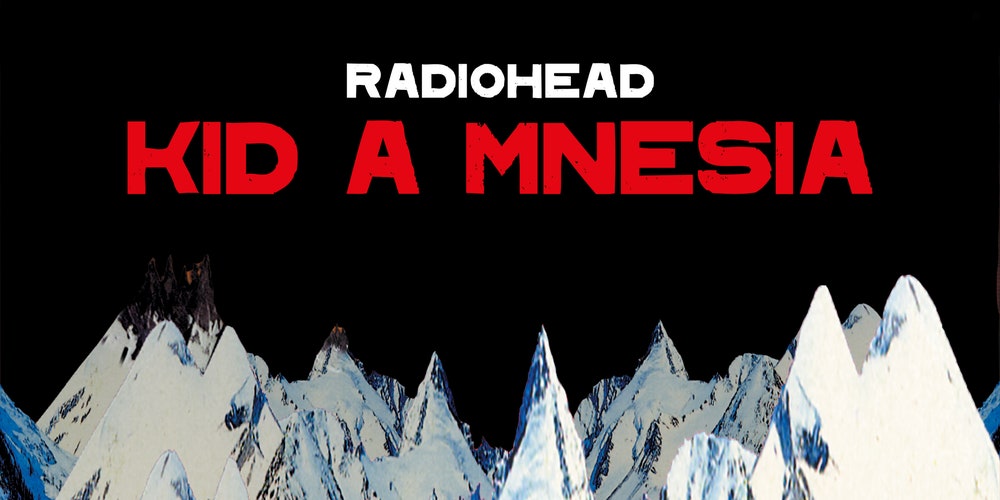Radiohead release KID A MNESIA, a double reissue album featuring previously unreleased material and B-sides.
Following the release of OKNOTOK in 2017 — a 20-year anniversary reissue of Radiohead’s most acclaimed album, OK Computer — fans expected similar treatment for Kid A. But 2020 came and went, and it wasn’t until this fall that it all began to come together.
The first hint towards a new release came in the form of the band’s foray into TikTok on April 1. What followed was a series of unsettling videos featuring Radiohead’s longtime character Chieftain Mews, played by producer Nigel Godrich, which ultimately culminated in an announcement of the band’s new project.
On Sept. 6, the band announced KID A MNESIA as “a coming of age for Kid A & Amnesiac” that would also include unreleased material and B-sides from their Kid A era in a brand-new album, dubbed Kid Amnesiae.
Considering both albums were recorded at the same time (2001’s Amnesiac consists of leftover songs from Kid A), it makes sense that the band waited until now to release a twentieth anniversary reissue.
The story behind these two seminal classic albums is intricate and slightly convoluted. At the end of the ‘90s, Radiohead were at the top of their game. After OK Computer came out in 1997 and won the band their first Grammy Award, fans excitedly anticipated what would follow; but the turn of the millennium marked a stark change in the sound that had come to define them.
Gone were the moody guitar riffs from The Bends and OK Computer’s anthemic rock ballads; instead of what seemed to be the logical next step, Kid A was the band’s electronic left turn. The record was Radiohead’s first real attempt at making electronic music, and was a quiet, hollow, and unsettling continuation from what was once considered their peak.
Now, it’s impossible to dissociate electronic music from Radiohead; Kid A and Amnesiac firmly cemented that production style into their repertoire, and have influenced all their albums since. In Kid Amnesiae, the band explores this sound once again and combines near-forgotten bits and pieces from two decades ago to form a brand-new record, proving they’re just as willing to experiment now as they were back then.
The new album opens with “Like Spinning Plates – ‘Why Us?’ Version,” a superb reimagining of the Amnesiac rendition as a piano arrangement. Amid a cacophony of otherworldly electronic flutters, frontman Thom Yorke opens the album on a strong note, asking “Why us? / Why not someone else, not us?” in his familiar falsetto as the piano comes in.
“Untitled v1” follows, featuring creepy and distorted vocals reminiscent of Kid A’s title track, and is the perfect lead up to the new album’s first single, “If You Say The Word.” As Yorke croons over an eerily comforting, drum-led backing track, the almost-forgotten song breathes new life into Kid Amnesiae and evokes both the frigid emptiness of Kid A and the uncanny nostalgia of Amnesiac. A music video accompanied it, complete with the unsettling and abstract visuals that always seem to accompany the band’s new releases.
“Follow Me Around” is the album’s other single. An acoustic track, it’s a distinct departure in style from the rest of the album’s electronic sound, more akin to something from The Bends, but the lyrics are what make it fit with the rest of Kid Amnesiae: “I see you in the dark / Corner of the street / Calling after me, yeah.”
The rest of Kid Amnesiae is made up of other instrumental tracks and alternate versions of existing songs, but the most compelling of which is definitely “How to Disappear into Strings,” a hauntingly beautiful instrumental-only rendition of Kid A’s “How to Disappear Completely,” serving as the perfect ending for the album.
Unfortunately, unlike OKNOTOK, none of KID A MNESIA’s songs were remastered — Kid A and Amnesiac received no special treatment for their re-release. While the entire album clocks in at just over two hours, the new material spans only 34 minutes.
Listeners who are left wanting more out of this release can turn to the KID A MNESIA Exhibition, a fever dream of an interactive audiovisual experience, which was released Nov. 18. While not a replacement for new music, it allows fans to experience the albums in a completely new way. Players can explore virtual landscapes inspired by both albums while specific songs from Kid A and Amnesiac play, depending on which area the player finds themselves in. It can be downloaded for free on PC, Mac, and PS5 on the Epic Games store.
KID A MNESIA is a perfect celebration of Radiohead’s most unique albums. Longtime fans will appreciate the inclusion of reimagined existing songs and previously unreleased tracks in Kid Amnesiae, and any excuse to listen to Kid A and Amnesiac back-to-back is a good one.
